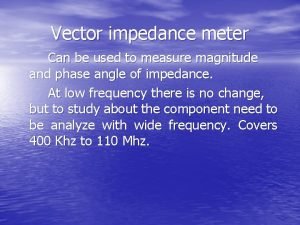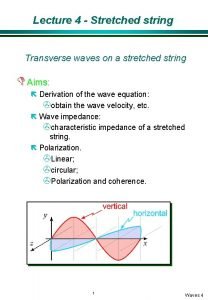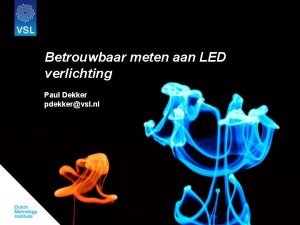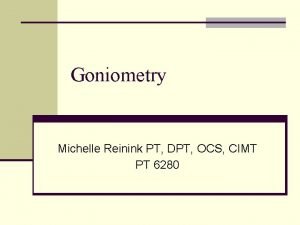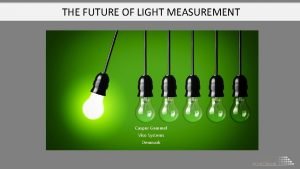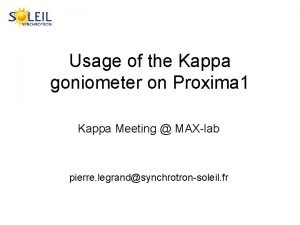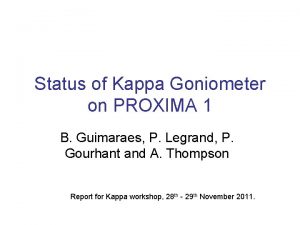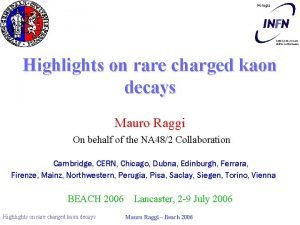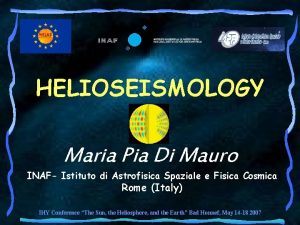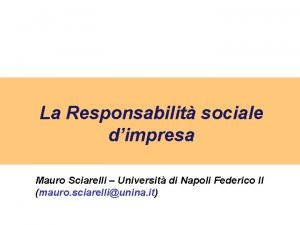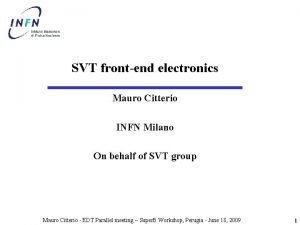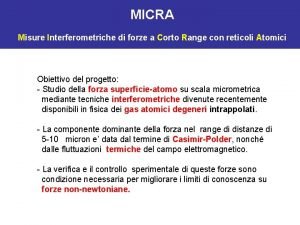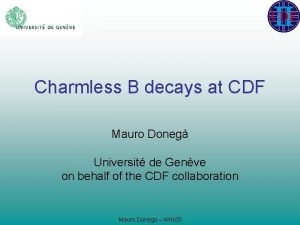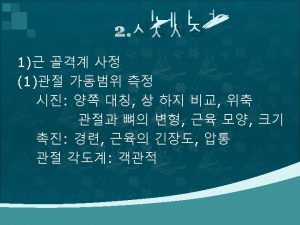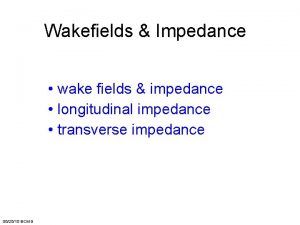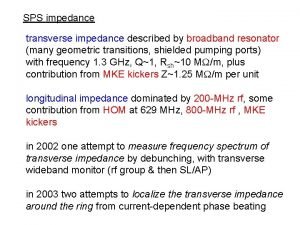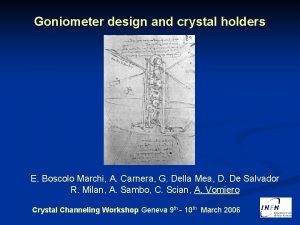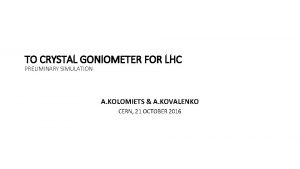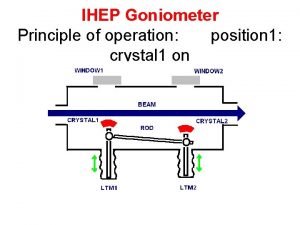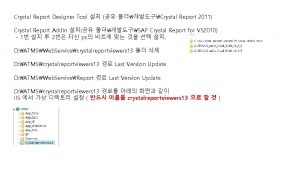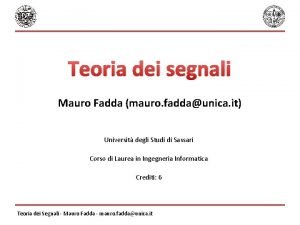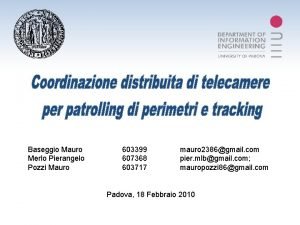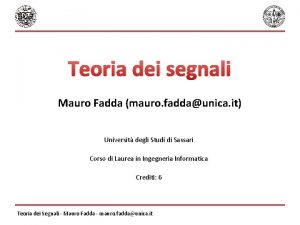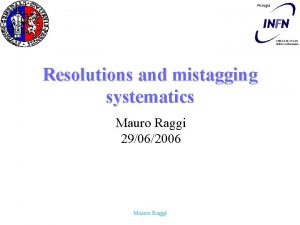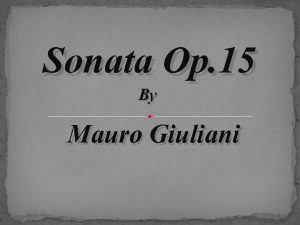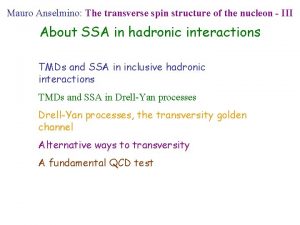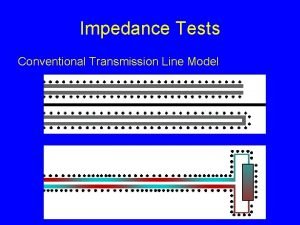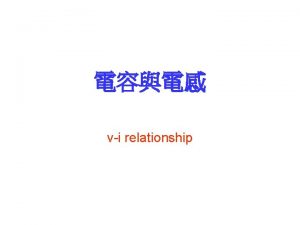Transverse impedance of crystal goniometer v 2 Mauro




















- Slides: 20

Transverse impedance of crystal goniometer (v 2) Mauro Migliorati, Danilo Quartullo, Benoit Salvant Acknowledgments: Nicolo Biancacci, Alessandro Danisi, Theo Demma, Inigo Llamas Garcia, Andrea Mostacci, Lorenzo Teofili. 07. 12. 2020

Status Collaboration with University of Sapienza (Rome) Understand improve the discrepancies between simulations and measurements Danilo performed simulations of longitudinal impedance With the issues of 11 T dipoles, crystals are now the baseline of HL-LHC with ions Need a fast approval of the system for Run 3, based on version 2 Need transverse impedance for ions, and we decided to do it ourselves with high priority

Need to remodel • The model could not be digested correctly by CST • Required remodeling to remove many unnecessary details and model issues

Longitudinal impedance

longitudinal impedance (crystal in parking position – 54 mm) Model from Danilo Simplified model Similar impedance spectrum

longitudinal impedance (crystal at 14 mm) Model from Danilo Simplified model Impedance spectrum is quite different Same order of magnitude for frequency range and shunt impedance

longitudinal impedance (crystal at 2 mm) Model from Danilo Simplified model Impedance spectrum is quite different Same order of magnitude for frequency range and shunt impedance

Increasing mesh cells around the beam Im(Z/n)~1 m. Ohm (i. e. ~1% of the total LHC low frequency until 500 MHz) for 1 crystal per plane per beam 2% of total LHC impedance when all crystals fully inserted

Using the crystal properties measured by Danilo and Mauro • Measured by cavity perturbation measurements between 2 and 4 GHz • Significant difference between placing the crystal in one direction or another

Longitudinal imaginary impedance More losses on the main crystal mode

Longitudinal imaginary impedance Frequency shift of 2. 5 MHz and reduction of the crystal mode by a factor 2. 4

Longitudinal imaginary low frequency impedance No significant change with crystal properties

Longitudinal imaginary low frequency impedance Significant contribution of the goniometer to the longitudinal impedance of LHC Contribution divided by 5 when crystal in parking position

Transverse impedance

54 mm (parking position): are there transverse modes? Several transverse modes below 1 GHz (600 MHz, 800 MHz, 940 MHz), but shunt impedance small compared to large constant term.

Transverse modes? All major vertical modes are already longitudinal modes

Transverse impedance (very noisy, requires convergence) • 2 mm Zx= 15 Ohm/mm = 15 k. Ohm/m Zy= 13 Ohm/mm = 13 k. Ohm/m • 14 mm Zx =11 Ohm/5 mm= 2 k. Ohm/m Zy = 5 Ohm/5 mm = 1 k. Ohm/m • 54 mm Zx=5 Ohm/5 mm=1 k. Ohm/mm Zy= 5 Ohm/5 mm=1 k. Ohm/mm

Next steps • Longitudinal impedance contribution is significant compared to LHC impedance model (1 m. Ohm/goniometer) • Transverse contribution appears less significant for beta functions of IR 7, to be confirmed with more simulations • Parameter sweep ongoing for transverse impedance with measured crystal parameters • Simulations with Eigenmode solver are now feasible with simplified geometry • Could we get an assessment of the crystal parameters closer to the frequency range of interest?


Silicon lossy (CST default model) Silicon fit from measured data
 Vector impedance meter block diagram
Vector impedance meter block diagram Transverse impedance of a string
Transverse impedance of a string Ligaments in the stomach
Ligaments in the stomach Goniometer betrouwbaarheid
Goniometer betrouwbaarheid Indications of goniometry
Indications of goniometry Goniometer light measurement
Goniometer light measurement Kappa goniometer
Kappa goniometer Kappa goniometer
Kappa goniometer Types of goniometer
Types of goniometer Halo goniometer review
Halo goniometer review Mauro raggi
Mauro raggi Tretiach mauro
Tretiach mauro Maria pia di mauro
Maria pia di mauro Mauro gocilli
Mauro gocilli Mauro fiorentino
Mauro fiorentino Mauro sciarelli unina
Mauro sciarelli unina Mauro citterio
Mauro citterio Mauro zaque promotor
Mauro zaque promotor Mauro antezza
Mauro antezza Lactose intoleranc
Lactose intoleranc Mauro donega
Mauro donega
